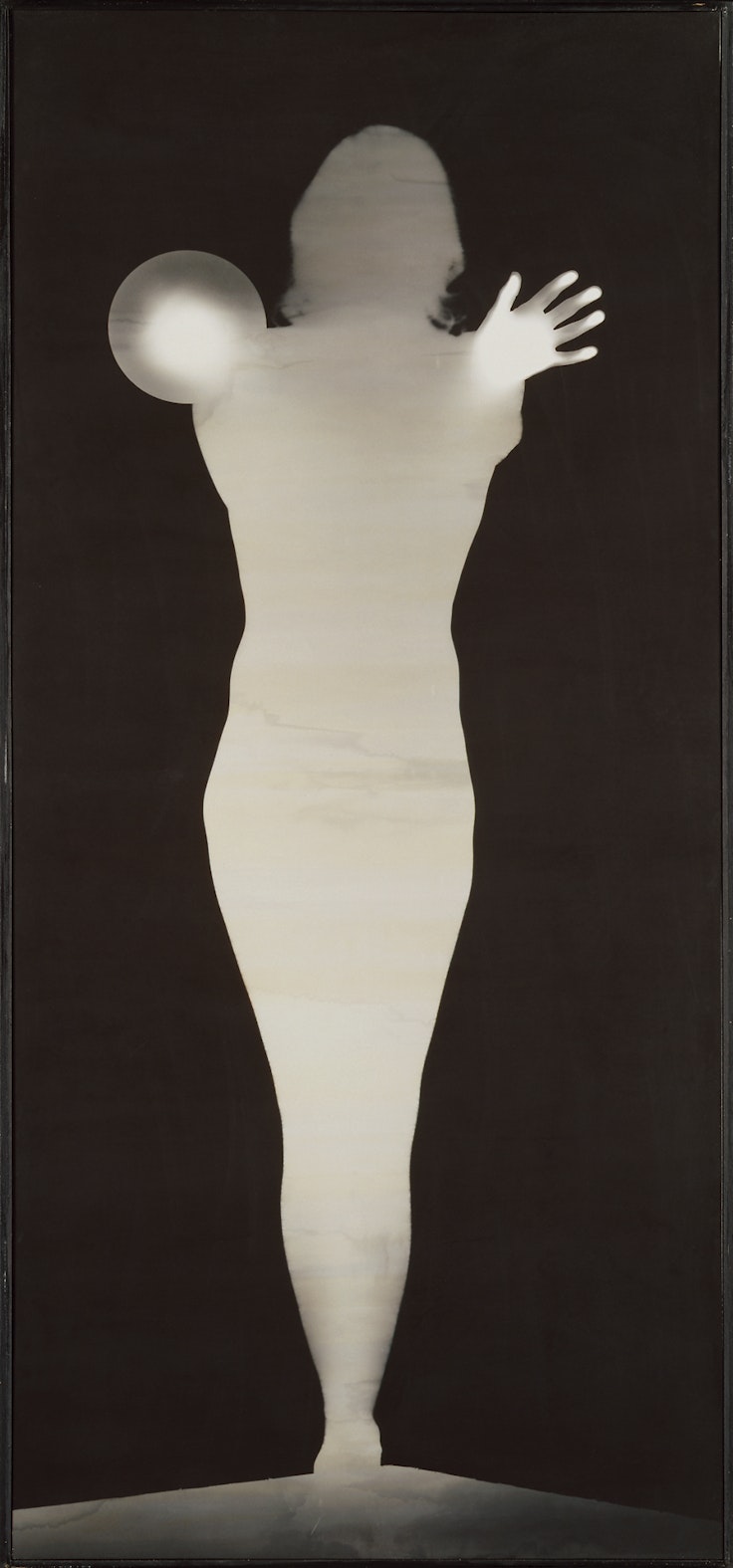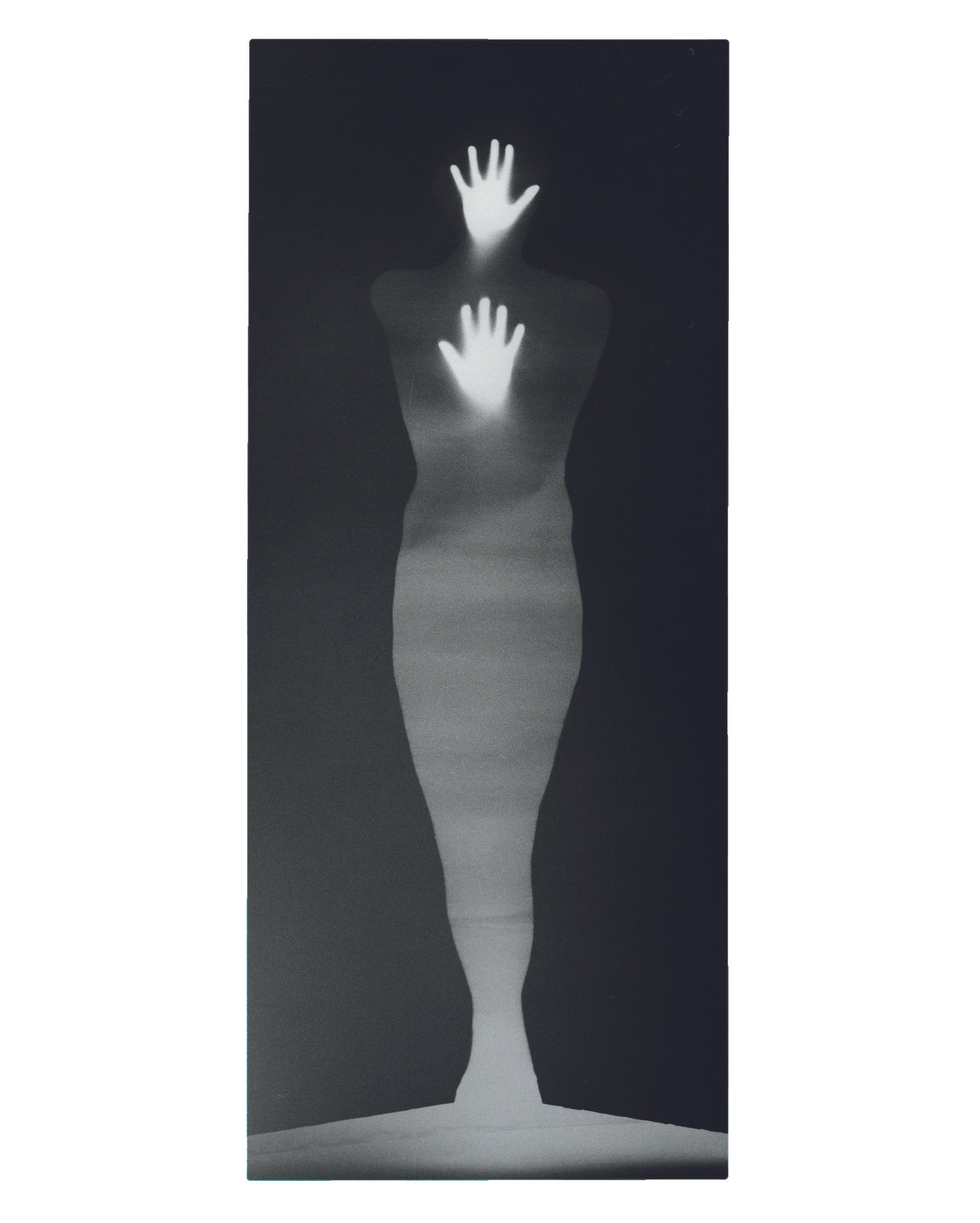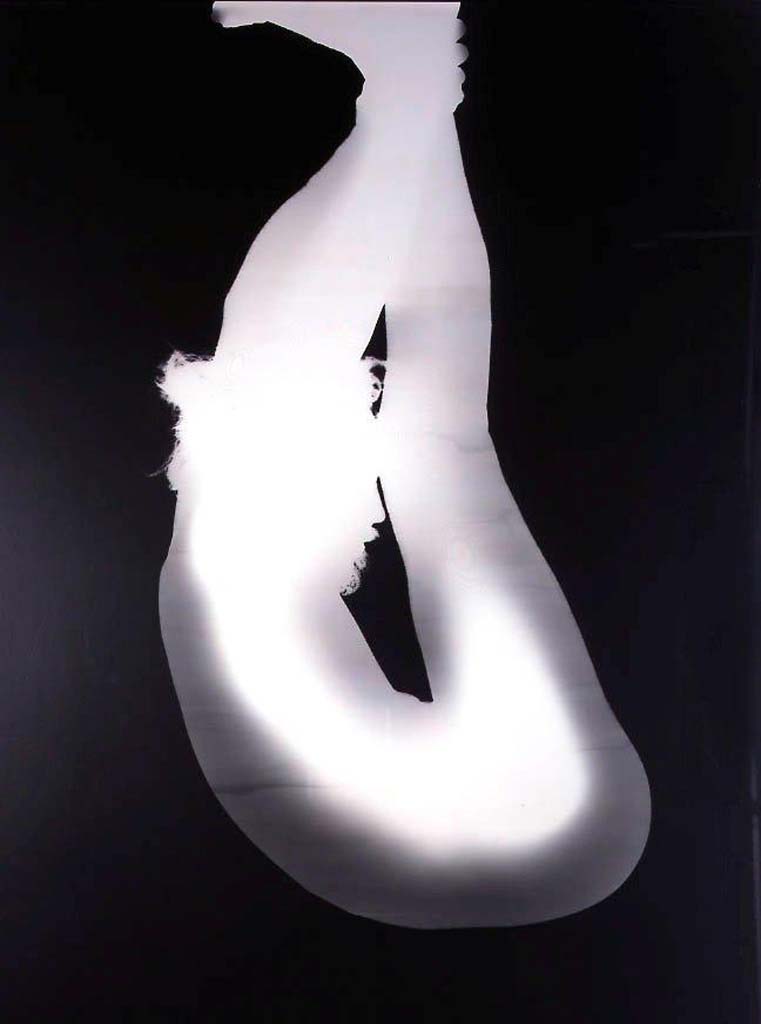As discussed in the reading, photograms (silhouette images made using light-sensitive paper) are a form of nonhuman photography. Bruce Conner, a pop/abject/assemblage artist active in the ’60s-’80s, made a series of photograms called Angels capturing the human figure in unfamiliar, ghostly poses. Due to the scattering of light, parts of the body that were closer to the capture surface left a brighter mark, making it look like the figures were glowing or emitting superhuman power. Despite the human subjects, the title (literally a divine being) and technique make this work nonhuman.



Zylinska writes that postphotography helps us see the medium as “an assemblage of ‘surface-marking technologies'” rather than a “semiotic/indexical understanding of images.” This wording was familiar to me from more traditional art classes where we were taught to think about 2D art as ‘imagemaking’ rather than separating out categories like drawing, painting, and such which can be constrictive.
I agree with Zylinska that computational and algorithmic techniques are not changing photography fundamentally, rather, they are “intensifying [the nonhuman] condition”. Computation has expanded the field and is helping make complex photographic techniques more accessible. It’s true that computing has enabled three-dimensional, generative, and extrasensory imaging, but at the highest level these practices have existed for a long time (ex. if you conceive of Sol LeWitt’s instructional wall drawings as generative.)